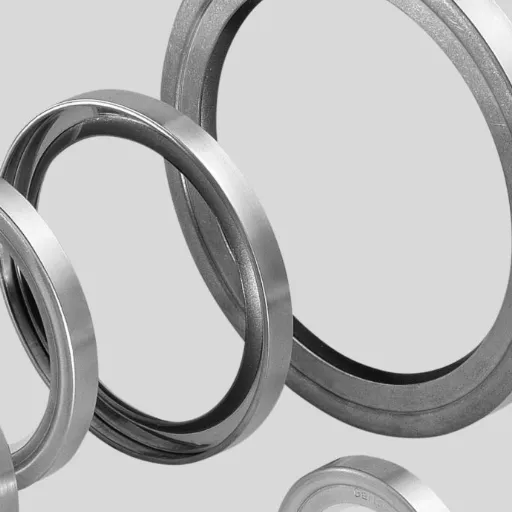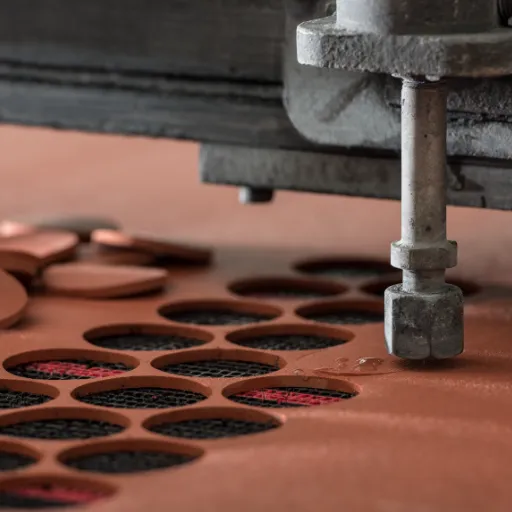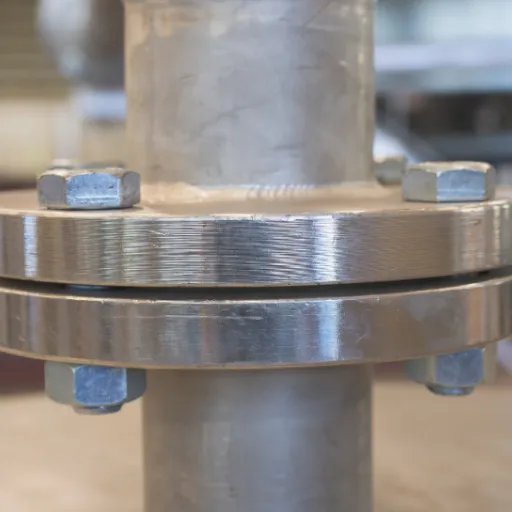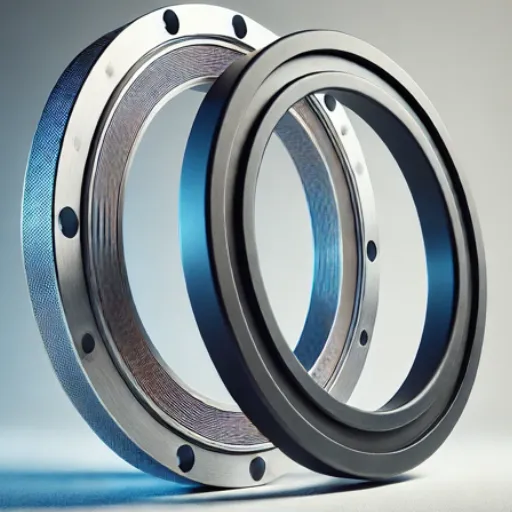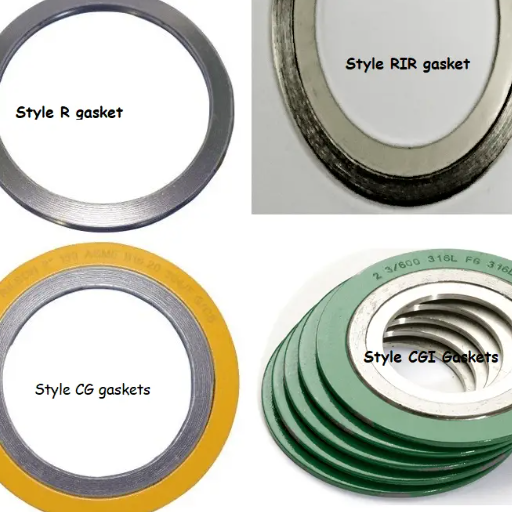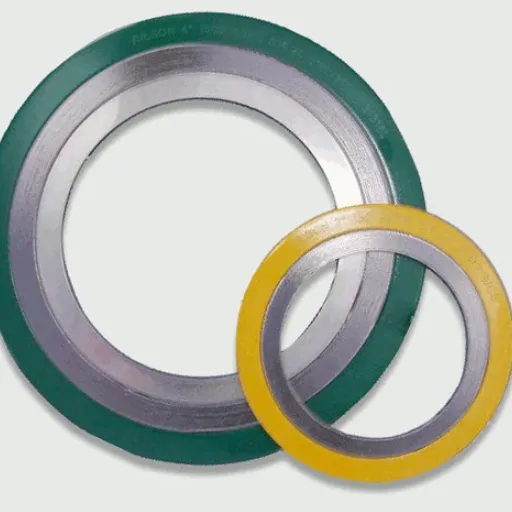When it comes to fastening, choosing the wrong kind of nut can compromise everything. There are thousands of nuts on the market that differ simply because of their design and function, among them flange and lock nuts. So how exactly do flange nuts differ from lock nuts? Whether you’re working on a DIY project, machinery, or seeking a reliable fastening method, it’s essential to understand the difference between flange nuts and lock nuts. This article will delve into their major differences, usages, and benefits, providing comprehensive insight into selecting the appropriate nut for your application.
Understanding Flange Nuts
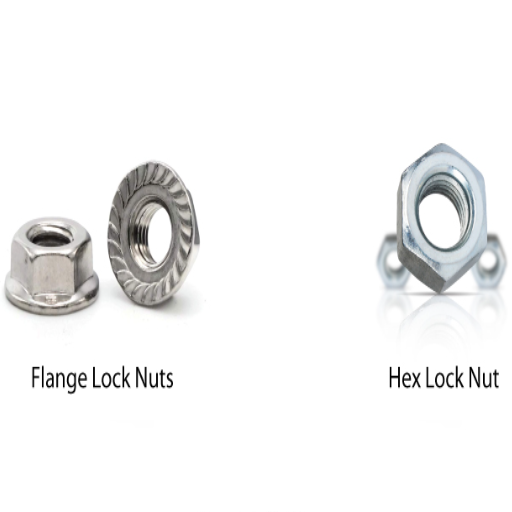
Flange nuts are specialized fasteners featuring a broad flat rim at the bottom that serves the function of a washer. Pressure is distributed evenly across the surface of the object being fastened, reducing damage to the surface and preventing loosening of the fastener. These nuts are commonly used wherever additional support is needed, with their main appeal being vibration resistance and the ability to hold without requiring a separate washer.
Definition of Flange Nut
Key Definition: A flange nut is a fastener with an integrated flange at the base that functions as a washer, preventing surface damage by distributing pressure evenly across the contact area.
The integrated flange reduces surface scuffing and loosening, making it ideal for applications requiring a firm, reliable grip. These nuts have seen increased use in automotive, manufacturing, and construction industries due to their vibration-resisting properties and enhanced stability without requiring additional components like separate washers.
Recent developments in flange nuts include serrated flanges, which increase grip levels by creating additional friction against the mating surface, serving as versatile and effective solutions in both high-vibration and heavy-duty settings.
Applications of Flange Nuts
Flange nuts find applications across numerous industries due to their versatile design and engineering advantages:
- Automotive Industry: Fastening exhaust systems, engine mounting, and suspension systems where vibration is present
- Construction: Securing steel structures, scaffolds, and heavy-duty equipment
- Manufacturing: Assembly line machinery where precision and stability are critical
- General Applications: Any environment subject to stress or motion where serrated designs provide firm locking
Advantages of Using Flange Nuts
- Integrated washer-like flange distributes pressure evenly
- Reduces risk of damage and vibration-induced loosening
- Eliminates need for separate washers, simplifying installation
- Maintains structural integrity under extreme stress and high temperatures
- Serrated designs enhance grip and prevent accidental loosening
- Cost-effective solution reducing operational expenses
Exploring Lock Nuts
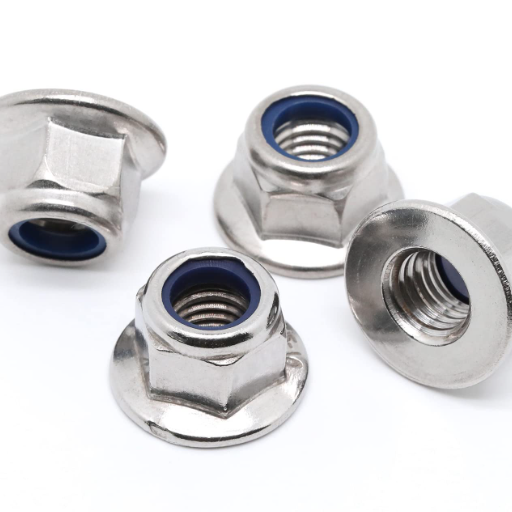
Lock nuts are specialized fasteners designed to secure joints and prevent loosening due to vibrations or torque. Different locking mechanisms achieve this function, including nylon inserts, thread deformation, or additional locking components. These nuts are essential in aerospace, automotive, and machinery industries where reliability and security are paramount.
Definition of Lock Nut
Key Definition: A lock nut (or locking nut) is designed to resist loosening under vibration or rotational force through various mechanisms such as nylon inserts, deformed threads, or external locking elements.
Lock nuts come in various forms, from integrated nylon insert nuts (nylock) to prevailing torque types that deform threads slightly. They’re manufactured using durable materials such as stainless steel, brass, or alloy steel, ensuring longevity in demanding applications.
Applications of Lock Nuts
| Industry | Applications | Key Benefits |
|---|---|---|
| Aerospace | Panels, engine parts, landing gear assemblies | Extreme stress and temperature resistance |
| Automotive | Engines, suspensions, steering systems, EV components | High torque and vibration resistance |
| Construction | Steel frames, bridges, high-rise buildings | Stability under dynamic loads |
| Heavy Machinery | Excavators, cranes, industrial equipment | Maintains tightness under mechanical loads |
| Renewable Energy | Wind turbines, solar panel installations | Environmental factor resistance |
Advantages of Using Lock Nuts
- Superior resistance to loosening under vibration and torque
- Maintains structural integrity in critical applications
- Designed for harsh environmental conditions
- Reusable with minimal maintenance requirements
- Cost-effective and eco-friendly long-term solution
- Increasing demand in sustainable applications
Flange Nut vs Lock Nut: Key Differences
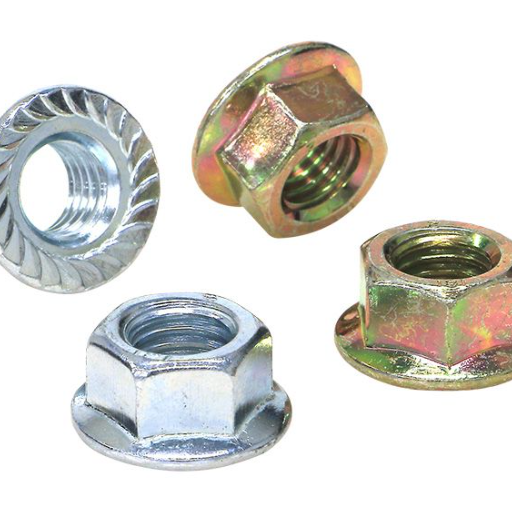
| Aspect | Flange Nut | Lock Nut |
|---|---|---|
| Primary Function | Load distribution and surface protection | Vibration and loosening resistance |
| Design Feature | Integrated flange acting as washer | Locking mechanisms (nylon, deformed threads) |
| Best Applications | Even load distribution requirements | High-vibration, high-stress environments |
| Additional Components | Eliminates need for separate washers | Self-contained locking system |
| Installation | Simplified assembly process | Secure long-term connection |
Design Features Comparison
Flange Nuts: Feature a wide flange that acts as a built-in washer, distributing pressure evenly while reducing stress and preventing surface damage. This enhances stability while minimizing the need for separate washers.
Lock Nuts: Incorporate specialized mechanisms designed for superior grip and resistance to loosening under vibration or torque, making them ideal for maintaining steadfast connections in challenging conditions.
Performance in Various Conditions
- Flange Nuts: Excel in uniform load distribution applications, particularly effective on softer surfaces prone to damage
- Lock Nuts: Outperform in high-vibration or high-torque environments due to their unique locking mechanisms
- Environmental Factors: Both types can be treated with coatings for enhanced corrosion resistance depending on application requirements
Types of Fasteners: Specialized Options
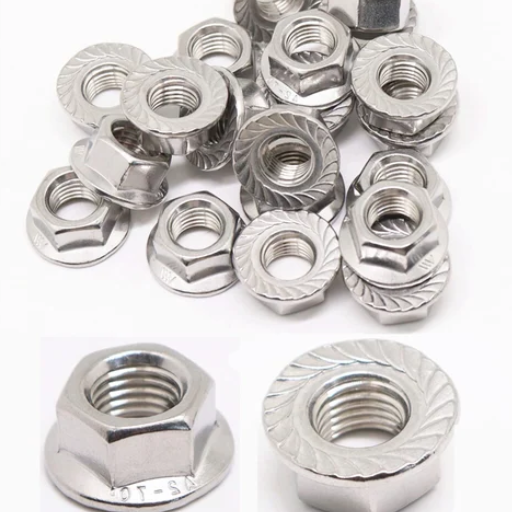
Hex Nuts and Their Functions
Hex nuts are among the most versatile fasteners available, serving to secure bolts and screws with their six flat sides providing excellent grip for easy tightening or loosening. They’re commonly paired with washers to distribute pressure and reduce material damage risk.
Serrated Flange Nut Overview
Special Feature: Serrated flange nuts combine washer-type flanges with serrated edges underneath, providing enhanced grip and vibration resistance while distributing loads evenly.
These nuts are indispensable for machinery and automotive applications where secure fastening is critical, eliminating the need for separate washers or locking mechanisms while reducing assembly time.
Flange Lock Nuts Explained
Flange lock nuts combine a large, flat serrated flange with gripping action, making them ideal for high-stress and vibration applications. Their integrated flange eliminates separate washer requirements, streamlining assembly processes.
Choosing the Right Fastener for Your Application
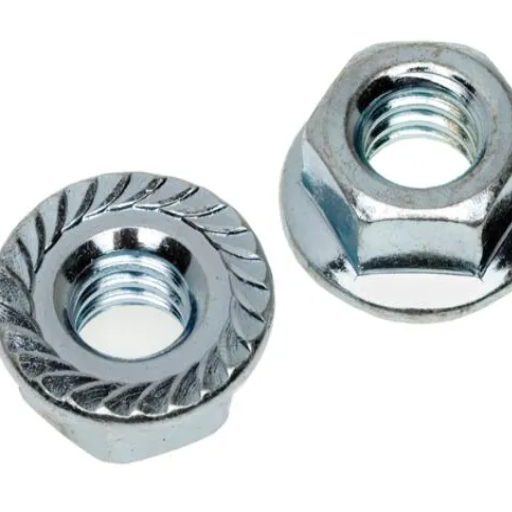
Factors to Consider When Selecting Nuts
- Material Compatibility: Ensure fastener compatibility with materials being joined
- Environmental Conditions: Consider moisture, temperature fluctuations, and vibration levels
- Load Requirements: Assess stress levels and forces the fastener must withstand
- Assembly Efficiency: Evaluate built-in design features that simplify installation
- Thread Compatibility: Verify thread pitch and diameter matching
- Corrosion Resistance: Select appropriate materials and coatings for environmental conditions
Thread Compatibility and Specifications
Critical considerations for thread selection include:
- Thread pitch and diameter compatibility
- Material and coating specifications for strength and corrosion resistance
- Compliance with international standards (ISO, ANSI, DIN)
- Precision requirements for specific applications
Aerospace Applications and Requirements
Aerospace applications demand the highest standards in fastener selection, requiring:
- Threads meeting extra-high precision and load-bearing capacity standards
- Materials offering optimal strength-to-weight ratios
- Resistance to extreme temperature variations and corrosion
- Compliance with stringent international aerospace standards
References
- Purdue University Engineering Resource
Nuts & Bolts Lesson
This document provides detailed information on various types of nuts, including lock nuts, and their applications. - University of Florida Fastener Technical Guide
Fastenal Fastener Technical Reference Guide
A comprehensive guide on fasteners, including the function and design of lock nuts. - University of Rochester Fabrication Articles
Off-The-Shelf Parts You Should Know
This article explains the purpose and design of flange bolts and nuts, as well as their differences from other fasteners. - Top Flange Nut Suppliers in China
Frequently Asked Questions (FAQ)
What’s the difference between flange nuts and lock nuts?
Flange nuts and lock nuts are just two different types of nuts that are designed for different purposes in assembly applications: the flange nut is fitted with a circular flange that acts as a large bearing surface, thereby tightening the fit and lessening the chances of loosening. Whereas, lock nuts are specifically engineered to prevent loosening due to vibration. Flange nuts are great to use where the application presents the need for a large contact area, whereas lock nuts should be used in high-vibration environments. Now that you know that fundamental difference can help you distinguish among all the various choices available when choosing fasteners for your need.
How do serrated flange nuts compare to standard nuts?
Serrated flange nuts have a serrated face that increases an intentional increased grip preventing loosening of the fastener. This is advantageous in special situations where vibration is a concern. On the other hand, standard nuts might not hold as well in highly dynamic conditions. The serrated face concentrates the load locally, reducing displacement. Both nuts are useful in various applications, but the serrated flange nuts easily get chosen for their simplicity of assembly and reliability.
What are the benefits of using lock nuts in machine assembly?
Lock nuts have several applications, especially in machine assembly, to prevent disassembly due to vibration. An interference prevailing torque keeps tension on the bolt threads and ensures a tight connection. This kind of fastener saves time and money since it reduces the need for readjustments or replacements. Lock nuts can often be reused several times, making the a cost-benefit option. Where corrosion threats exist, lock nuts can be coated for protection from corrosion, that lends to their long life in harsh environments.
How do flange nuts and lock nuts affect corrosion resistance?
Allowing corrosion resistance to be a the factors of choice when picking a fastener for any assembly. Flange nuts can pose a risk to corrosion, especially when used on coated mating surfaces unless properly coated themselves. On the opposite side, lock nuts can be treated with a coating such as zinc to help resist corrosion. This is very much needed in aerospace applications where durability and reliability mean everything. Then when weighing the decision between flange nuts and lock nuts, consider just what kind of application it is you want to go for and whether or not corrosion resistance will play a major role in your assembly process.
In which applications are hex nuts more suitable than flange nuts?
Hex nuts are generally preferred, given they offer a much more compact configuration where space is tight. They articulate in and around multiple threaded fasteners, therefore, being suitable most assembly lines. However, where large contact areas for the distribution of loads are required, flange nuts may be the way to go. In finish that does not require a lot of torque, hex nuts can hold the part tightly without much tightening. In the end, the factors, in general, considered for either hex or flange nuts will depend on the particular needs of the assembly and the desired performance characteristics.

